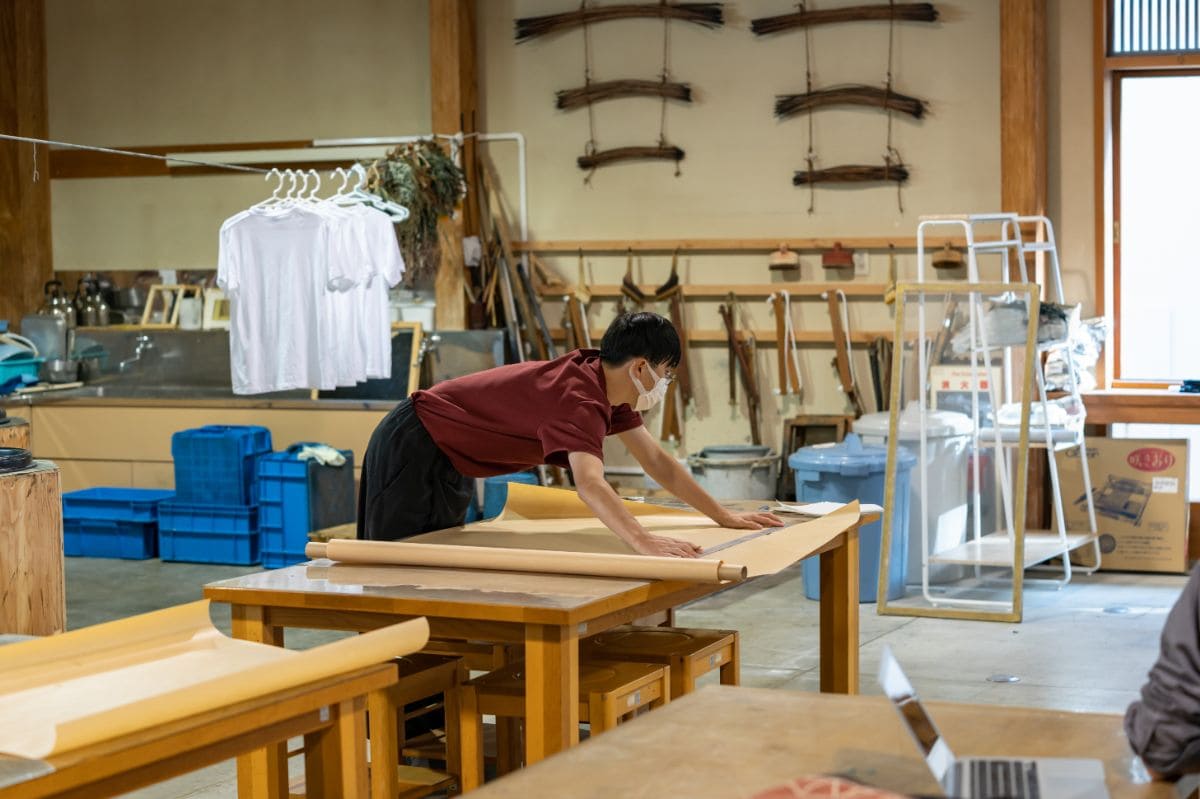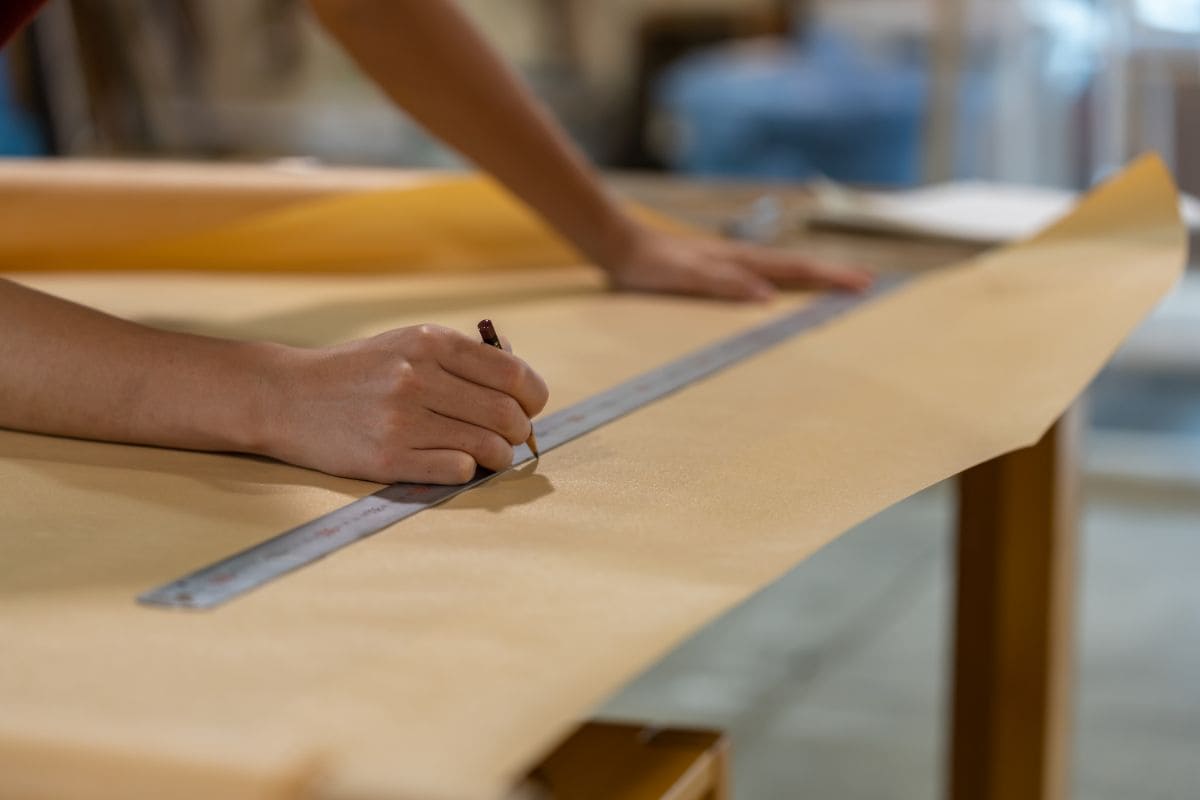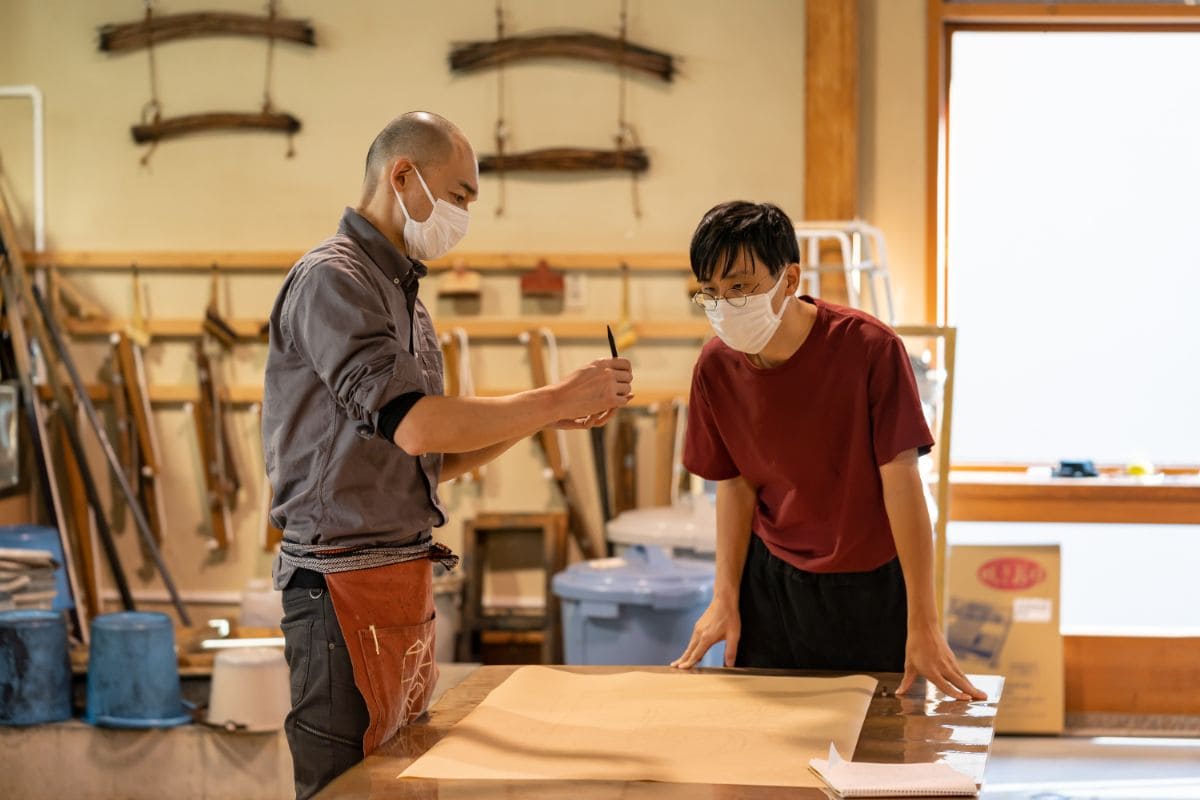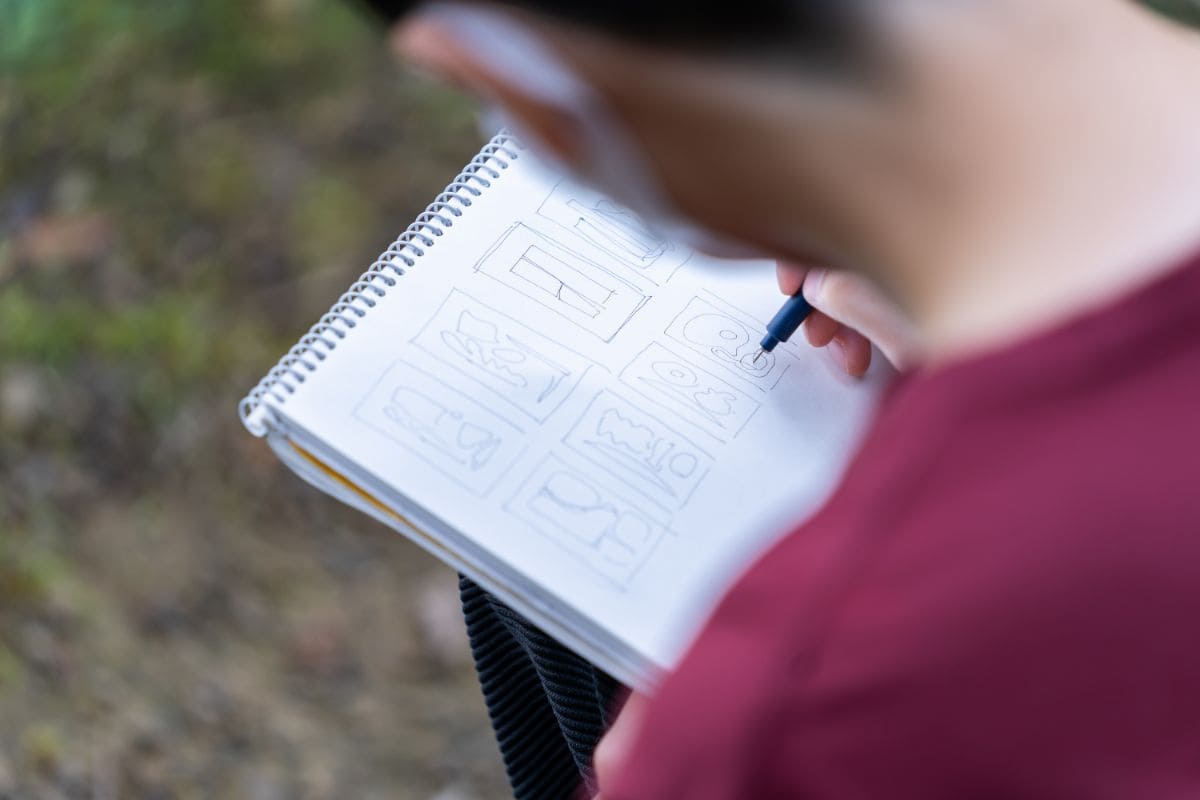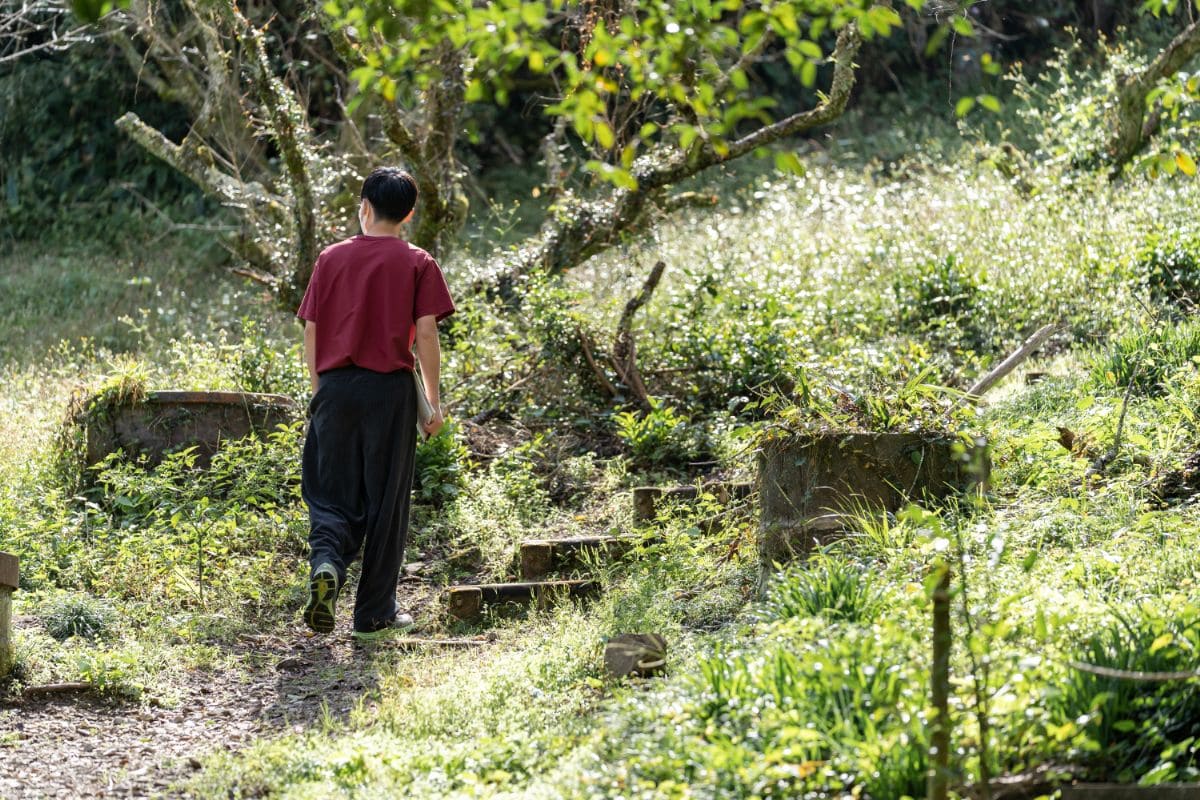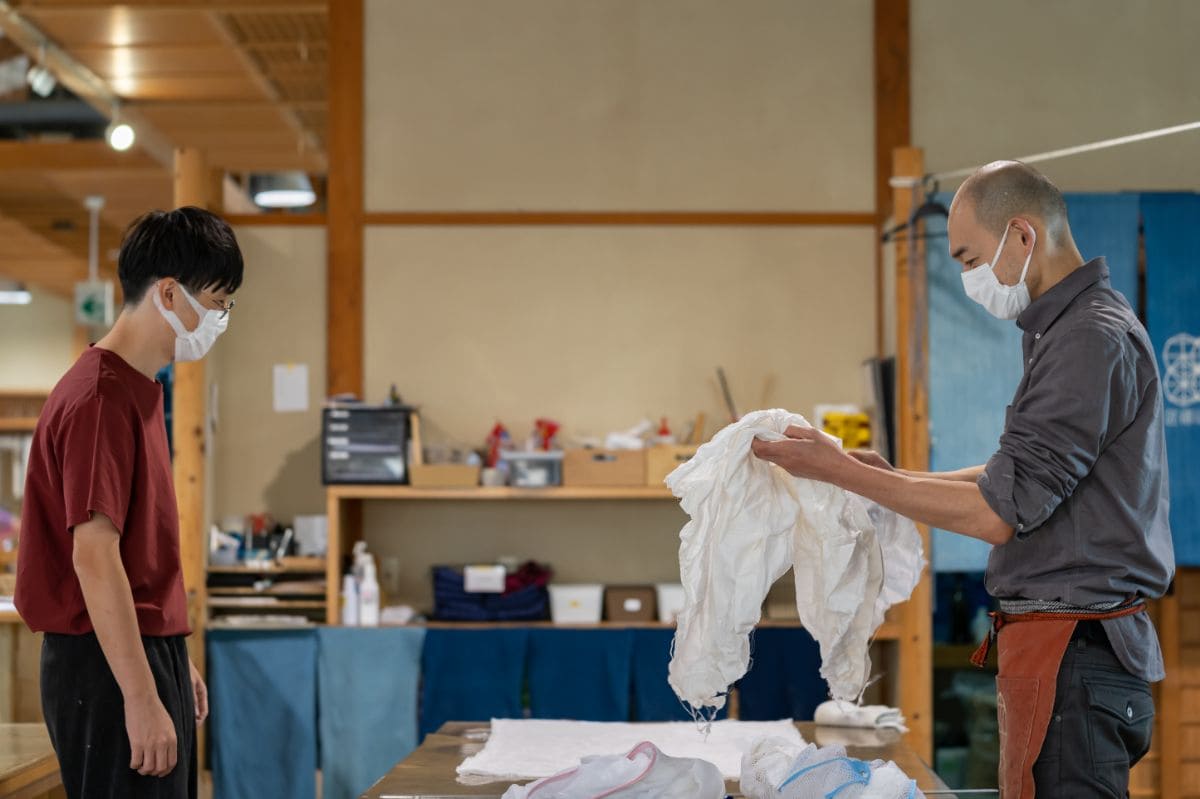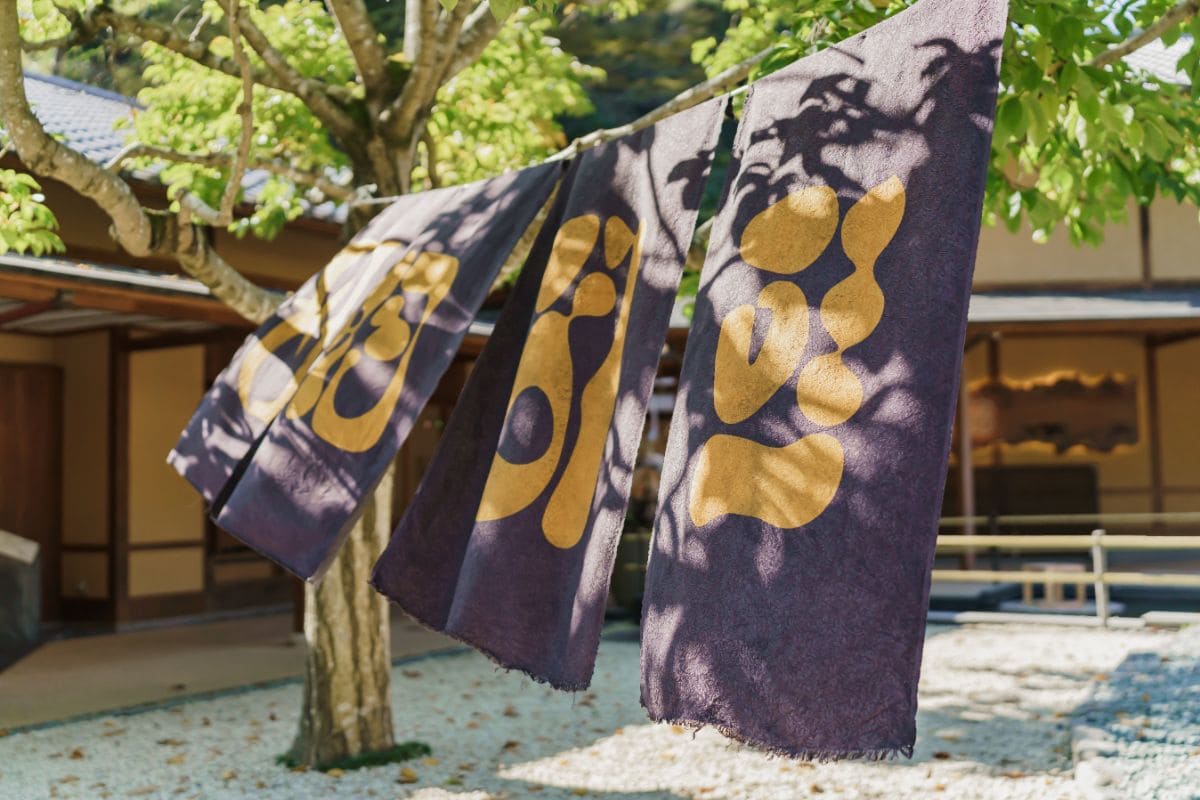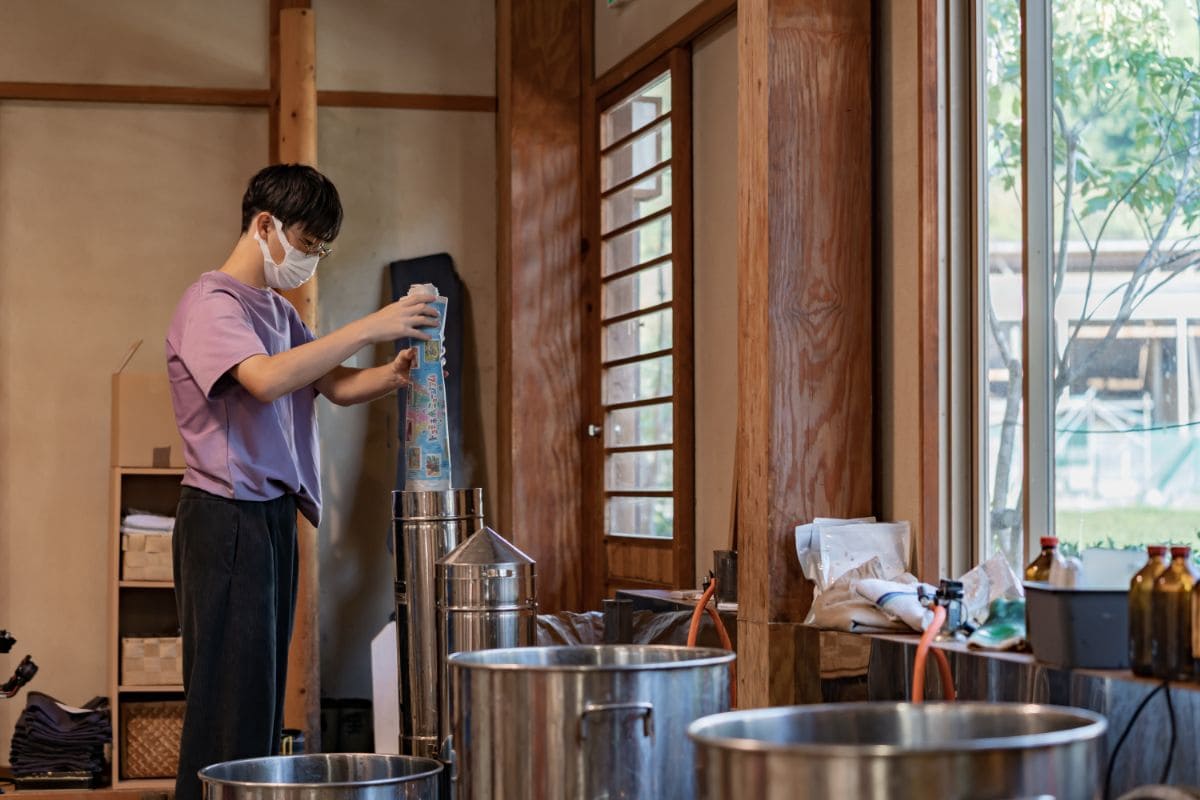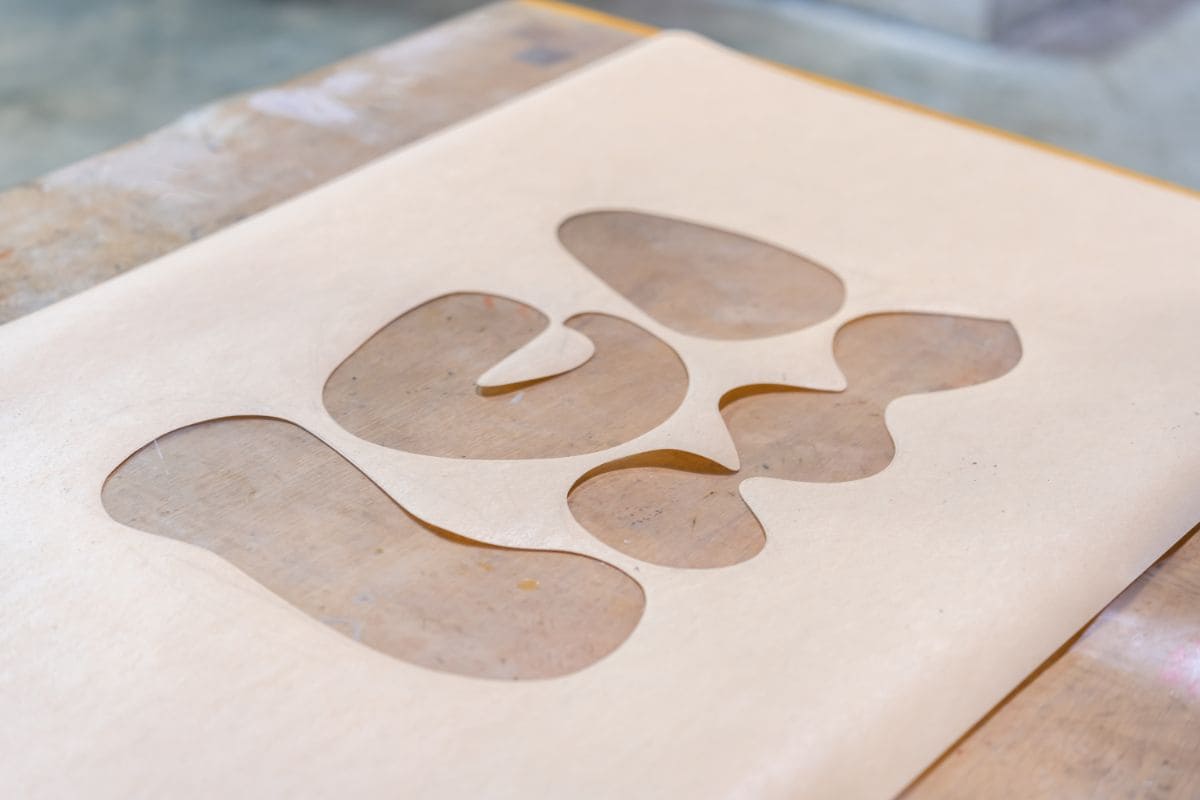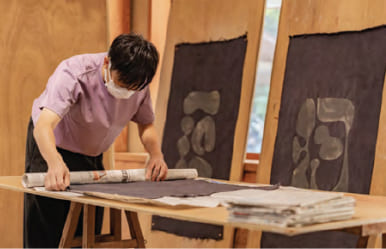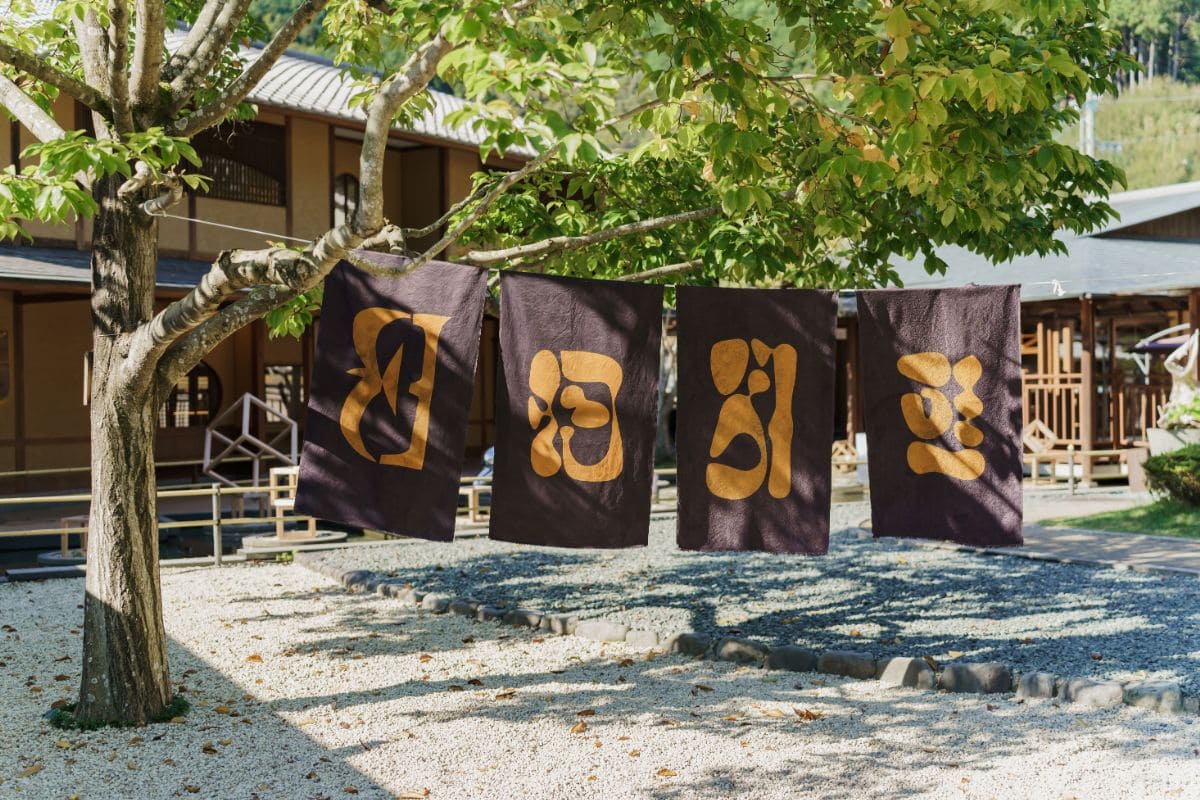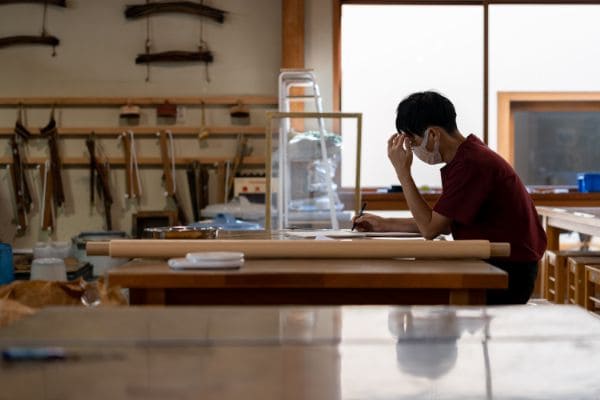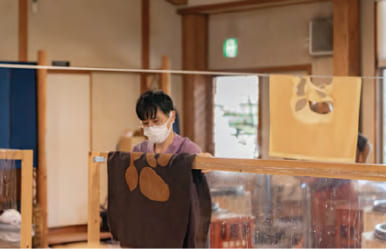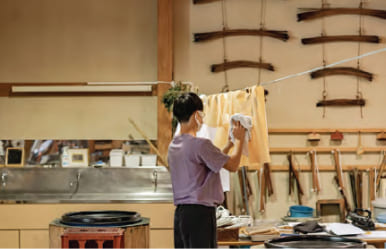Ikki x Tea Dyeing
Say the word tea, and the idea of drinking it will most likely come to mind. Yet for Ikki
Kobayashi, an entirely different world of tea came into focus during his Deshitabi
experience.
The Tokyo-based graphic designer headed to Shizuoka, a mountainous region in Japan synonymous
with high quality tea production, and turned his creative eye to the art of ochazome –
tea
dyeing.
During his visit, Ikki explored the unique world of Japanese tea dyeing, known as
ochazome, from
the knowledgeable – and innovative – Kyoichiro Washizu, who has devoted the past 15 years to
pioneering this art form.
From designing and sketching to cutting and stencilling, Ikki experienced the spectrum of
processes that underpin ochazome – culminating in four contemporary wall hanging art
pieces,
each depicting signature organic motifs.
Ikki’s experience unfolded at Takumishuku, Traditional Hand Craft Arts Center on the rural
fringes of Shizuoka city – a serene contemporary cultural complex surrounded by forested
mountains, with an interior garden and wooden walkways connecting a string of artisan workshops
(ceramics, bamboo and woodwork are just next door to the airy sun-filled dyeing space).
Here, under the tutelage of Washizu, the designer learnt how the ochazome concept fuses
two of
Shizuoka’s most famed exports – tea leaves plus dyeing, with the region long celebrated for its
rich craftmanship heritage of stencil dyeing.
“We use all the parts of tea plants that are left over in the tea making process. My intention is to spotlight tea growing in Shizuoka, where there are now many abandoned tea fields due to ageing populations.”
Washizu, the fifth generation of a stencil dyeing family, is the first to use tea as a dyeing
material, reflecting his desire to innovate as well as tap into the region’s natural resources
in a sustainable way.
As he explains: “We use all the parts of tea plants that are left over in the tea making
process. My intention is to spotlight tea growing in Shizuoka, where there are now many
abandoned tea fields due to ageing populations.”
Then, it’s time to get to work. First, Ikki produces four large rectangular expanses of white
kimono silk which he plans to use for his artworks, which are washed and laid outside in the sun
to dry, as the tea dye is prepared.
Maths is, it seems, a useful sideline skill; Ikki learns how the fabric shrinks 20 per cent
during the process, with 700g of material requiring around 350g of tea leaves, to which 50 times
as much water a material is added (in total of 35 litres).
Calculations completed, two vast iron vats start heating up with oversized cotton “tea bags”,
which are prodded from time to time during several 20 minute stints of simmering.
As the tea dye is prepared, Ikki seeks a little creative inspiration. Spontaneously following a
pathway out of the complex, he finds himself wandering along a quiet forested hillside, past
fruit trees and rice fields, leading to sweeping autumnal views of the surrounding mountains.
“I could hear the birds singing and a stream flowing and see all kinds of plants and trees,” he reflects. “I gave form to these sensations and created four abstract designs.”
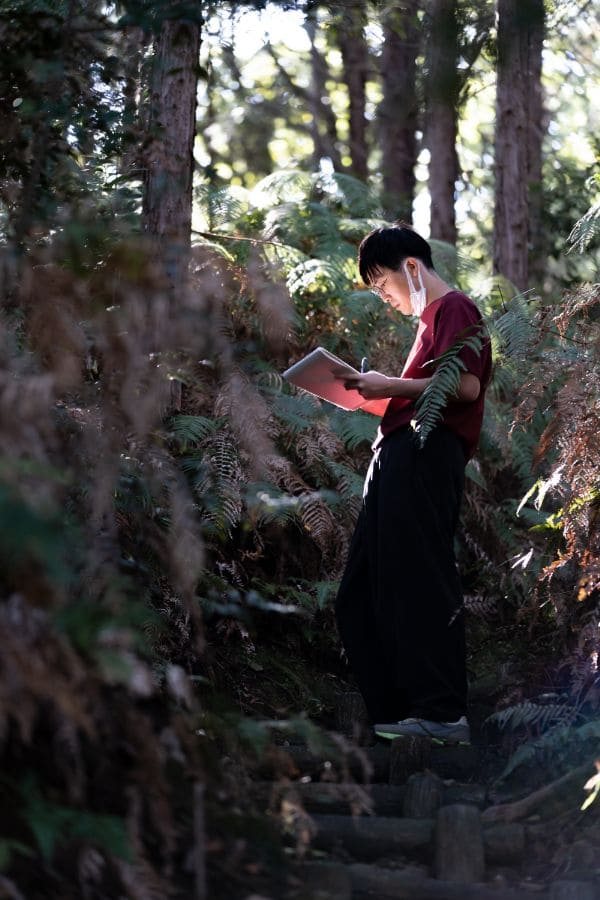
He pauses with his notepad to sketch from time to time, before returning to the workshop
where he completes the finishing touches to his four designs – a minimalist medley of
abstractly curved and naturally organic forms, clearly inspired by his surroundings.
“The designs come from the mountains,” reflects Ikki. “I could hear the birds singing and a
stream flowing and see all kinds of plants and trees,” he reflects. “I gave form to these
sensations and created four abstract designs.”
The scent of tea lingering in the air, the rest of the day passes quickly and peacefully.
The white textiles are added to the vats of dye – and then Kobayashi sketches his final
designs, known in the dyeing world as shitazu, onto large sheets of brown paper, which he
then skilfully cuts, in order to create stencils.
“I am deliberately cutting this very roughly, with no clean lines,” says Ikki, explaining
how he is inspired by the works of both Henri Matisse and Paul Klee as well as the
surrounding nature.
On day two, as the textiles continue to soak in tea dye before being dried, Kobayashi takes
a break from the experience and explores some spots in Shizuoka, from Nihondaira, a famed
hilltop viewing spot with vistas of Mount Fuji, to a local tea farm.
The final day marks the culmination of his efforts and involves perhaps the trickiest part
of the entire process: the stencilling. The carefully-cut paper with Ikki’s designs is laid
out onto pieces of tea-dyed fabric – now a dark shade of brown – before titanium glue is
applied to the surface.
The angle of the wooden utensil used to apply the thick glue plus the direction of the
pattern were both the most critical elements in ensuring an even distribution, explains
Washizu.
And so, Ikki begins: slowly and carefully, he sweeps glue across the stencil on each of the
four textiles. Mission accomplished, the textiles are steamed for about 20 minutes, before
being rinsed in water and hung out dry in the sunshine.
The end result? Four artworks with a deeply textured dark brown background enlivened by
Ikki’s distinct and natural motifs in a lighter orange shade – each one balancing a rich and
tactile sense of one-off craftsmanship with a timeless contemporary design.
Reflecting on the experience, Ikki says: “It is so different from just drawing. In graphic
design, the final design and layout is normally outsourced to an artisan to make and it is
normally realised through division of work. It was a new experience for me to get my hands
on the whole process of making the stencil to dyeing. It was valuable to be able to feel the
material changing during the whole process and to see it evolving into its complete form
after each step.”
IKKI KOBAYASHI
PROFILE
Graphic Designer. Born in 1992 in Hikone City, Shiga Prefecture. Graduated from the Department
of Graphic Design, Tama Art University in 2015. After working at Shiseido’s Creative
Headquarters, he became independent in 2019. Recipient of Tokyo TDC Award, JAGDA New Designer
Award, Japan Package Design Award Silver Prize and Pentawards Silver Award.
https://www.instagram.com/kobayashi.ikki/


